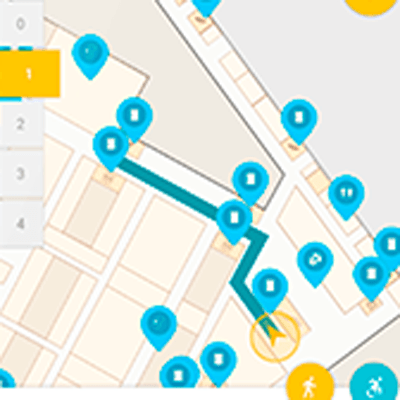If you are thinking about adding location awareness to your customer or employee experience, below are some items to consider.
Indoor vs. Outdoor or both?
-
- Outdoor – This is an important distinction because outdoor use opens up the use of GPS technology and highly sophisticated solutions like Google Maps and its corresponding APIs.
- Indoor services – require entirely different thinking. There are lots of alternatives like beacons, using magnetometers, wifi, RFID… each has pro and cons, and ultimately we have found a combination of these might be best. It just depends on the use case.
- Combining both indoor and outdoor – introduces some powerful use cases, but also requires sophisticated thinking and technology. For example, consider using Google Ads and Maps to drive customers to a location, then once at a location alerting an employee/manager that someone specific has arrived so they can be greeted like an expected guest.
Asset vs. People?
- Tracking people introduces a ‘big brother’ perception and real privacy concerns. There are many things to consider in this case, one of the most important being allowing people to opt-in vs out of this location service.
- Tracking assets – Active vs Passive: is last known location good enough or do you need to know exactly where something is at all times?
Precision?
- Some use cases require higher precision than current technology is capable of. This might mean entirely different approaches are needed (like using cameras instead). Use our experience to help you get to the right solution faster.
Foreground vs background?
- If you are using mobile technology, there are lots of tricks and issues to consider related to accuracy, battery life and user experience
Integration and dual experience?
- Integration – do you need to alert your back-office systems of changes in location?
- Dual experience – do customers and employees see location differently? For example, maybe a customer never actively uses location in your app, but a manager knows when a VIP customer is present and their app experience gives them relevant information to handle that customer interaction
Data History?
- Knowing location introduces a new dimension to analysis of your business. However, the amount of data can be significant. How much you keep? How to you analyze it? What about new concerns like GDPR?




